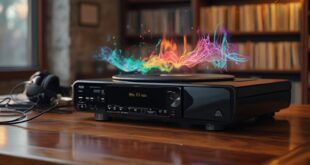Your car's charging port might not be working due to a few common issues. Dirt and dust can clog the port, hindering connections. You could also be using an incompatible charging cord or dealing with a blown fuse. A defective socket or damaged wiring may be the root cause, too. Regular maintenance and troubleshooting can help identify these problems. Keep exploring to find out how to address each of these potential issues effectively.
Reasons for Charging Port Malfunction
When your car's charging port malfunctions, it can be frustrating, especially if you're relying on it to keep your devices powered. Several factors could be at play.
Contamination from dirt and dust might hinder the connection, while using the wrong cord can prevent charging entirely. A blown fuse could also stop functionality, leaving you without power.
Additionally, a defective socket or damaged wiring may be the root cause. It's essential to diagnose the issue correctly to address it effectively and restore charging capability, ensuring you stay connected while on the go.
How to Clean Your Car's Charging Port
To keep your car's charging port functioning properly, it's essential to clean it regularly, especially since dirt and dust can accumulate over time.
Follow these steps to guarantee a clean connection:
- Inspect the Port: Look for visible debris or dust inside the port.
- Use Compressed Air: Blow out any loose particles to clear the port.
- Clean with Cotton Swab: Gently use a cotton swab to remove stubborn dirt without using liquids.
Checking Your Charging Cord for Compatibility
How can you guarantee your charging cord is compatible with your car's charging port?
First, check the cord type—ensure it matches your car's specifications, like USB-A, USB-C, or Lightning.
Look for any visible damage; frayed or broken cords won't work effectively.
If possible, test the cord with a different device or port to rule out issues.
Additionally, consider keeping spare cords on hand for convenience.
Diagnosing a Blown Fuse
After ensuring your charging cord is compatible, the next step in troubleshooting charging issues is diagnosing a blown fuse. A blown fuse can disrupt power to your charging port, so it's crucial to check it.
Here's how to proceed:
- Locate the Fuse Box: Refer to your vehicle's manual to find the fuse box and the specific fuse for the charging ports.
- Inspect the Fuse: Remove the fuse and check for a broken filament, which indicates it's blown.
- Replace if Necessary: If it's damaged, replace it with a fuse of the same rating, which is usually a low-cost fix.
Identifying and Replacing a Defective Socket
Identifying a defective socket is essential for restoring your car's charging functionality. Start by testing the socket with a multimeter to check for power flow. If it's dead, you'll need to replace it. Here's a quick reference table to help you understand the steps:
| Step | Action | Tools Needed |
|---|---|---|
| 1. Diagnose | Test with a multimeter | Multimeter |
| 2. Remove Socket | Unscrew and detach the old socket | Screwdriver |
| 3. Install New Socket | Attach and secure the new socket | Replacement socket |
Follow these steps, and you'll have your charging port up and running again!
Inspecting and Repairing Damaged Wiring
When inspecting and repairing damaged wiring in your car, it's crucial to start with a thorough visual examination.
Look for any signs of wear or damage, as these could be hindering your charging port's functionality.
Here are three key areas to check:
- Frayed Insulation: Exposed wires can cause shorts or disconnections.
- Rodent Damage: Inspect for chewed wires, especially if your car's been in storage.
- Corrosion: Look for rust or corrosion on connectors, which can impede electrical flow.
If you find any issues, replacing the damaged wiring can restore your car's charging capabilities.
Understanding Wireless Charging Options
Inspecting damaged wiring is an important step in maintaining your car's electrical system, but you might also want to contemplate the convenience of wireless charging options.
With inductive charging technology, you don't need cords or ports; your devices simply rest on a designated pad. This feature is common in newer and luxury vehicles, and you can find aftermarket options for older models.
While wireless charging is less efficient than traditional methods, it reduces clutter and potential failure points. Just keep in mind that repair costs for wireless systems can be higher, so weigh your options carefully.
Importance of Regular Maintenance and Troubleshooting
Regular maintenance and troubleshooting are essential for keeping your car's charging port in top condition. By regularly checking and maintaining your charging port, you can avoid unexpected issues.
Here are three key steps to follow:
- Clean the Port: Remove dust and debris using compressed air and cotton swabs.
- Inspect Cords: Regularly check for damage and verify you're using the correct type of cord.
- Check Fuses: Periodically test fuses related to the charging port to catch blown ones early.
Staying proactive can save you time and money while keeping your devices powered on the go.
Frequently Asked Questions
Can I Use My Phone While Charging in the Car?
Yes, you can use your phone while charging in the car. Just make sure the charging port and cord are functioning properly to avoid interruptions. Keep an eye on your phone's temperature during use for safety.
How Can I Prevent Future Charging Port Issues?
To prevent future charging port issues, regularly clean the port, use compatible cords, check fuses, and inspect wiring for damage. Staying proactive guarantees your devices stay charged without unexpected interruptions during your travels.
Will a Faulty Charging Port Affect Other Electrical Systems?
Yes, a faulty charging port can affect other electrical systems in your car. If the port isn't functioning, it may indicate broader wiring or fuse issues that impact various accessories and devices. Regular checks help prevent this.
Are There Specific Chargers for Different Car Models?
Yes, specific chargers exist for different car models. You should always check your vehicle's manual for compatible charging options. Using the right charger guarantees efficient charging and prevents potential damage to your devices or car system.
How Can Extreme Temperatures Affect My Car's Charging Port?
Extreme temperatures can cause your car's charging port to malfunction. Cold weather may lead to condensation, while excessive heat can damage internal components. Regularly inspect and maintain your port to guarantee it functions properly in varying conditions.
 Car Service Land Coupons for Oil change, Tires, Wheel alignment, Brakes, Maintenance
Car Service Land Coupons for Oil change, Tires, Wheel alignment, Brakes, Maintenance




